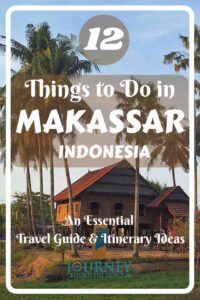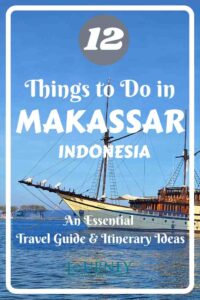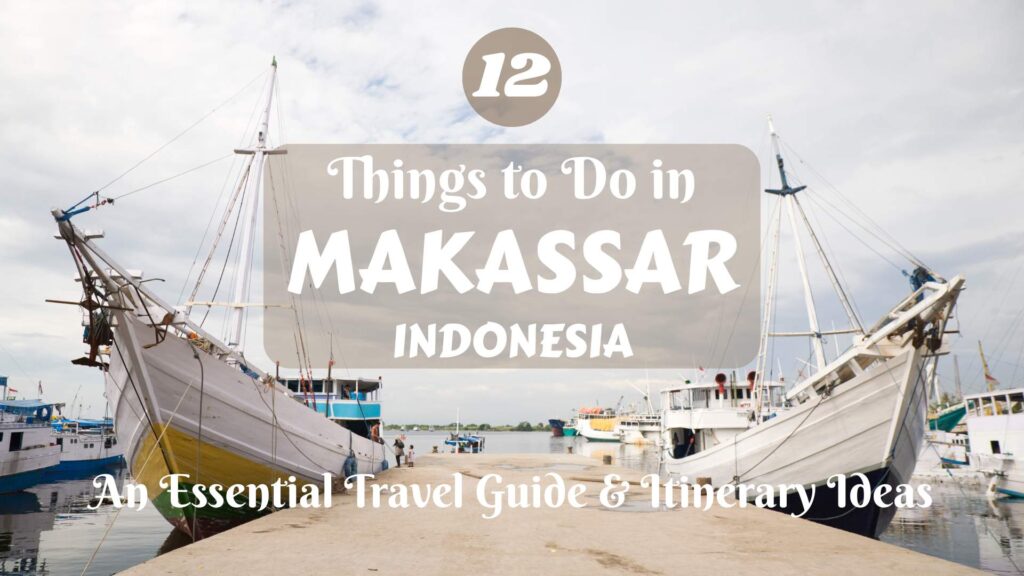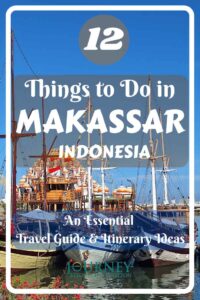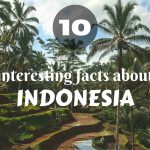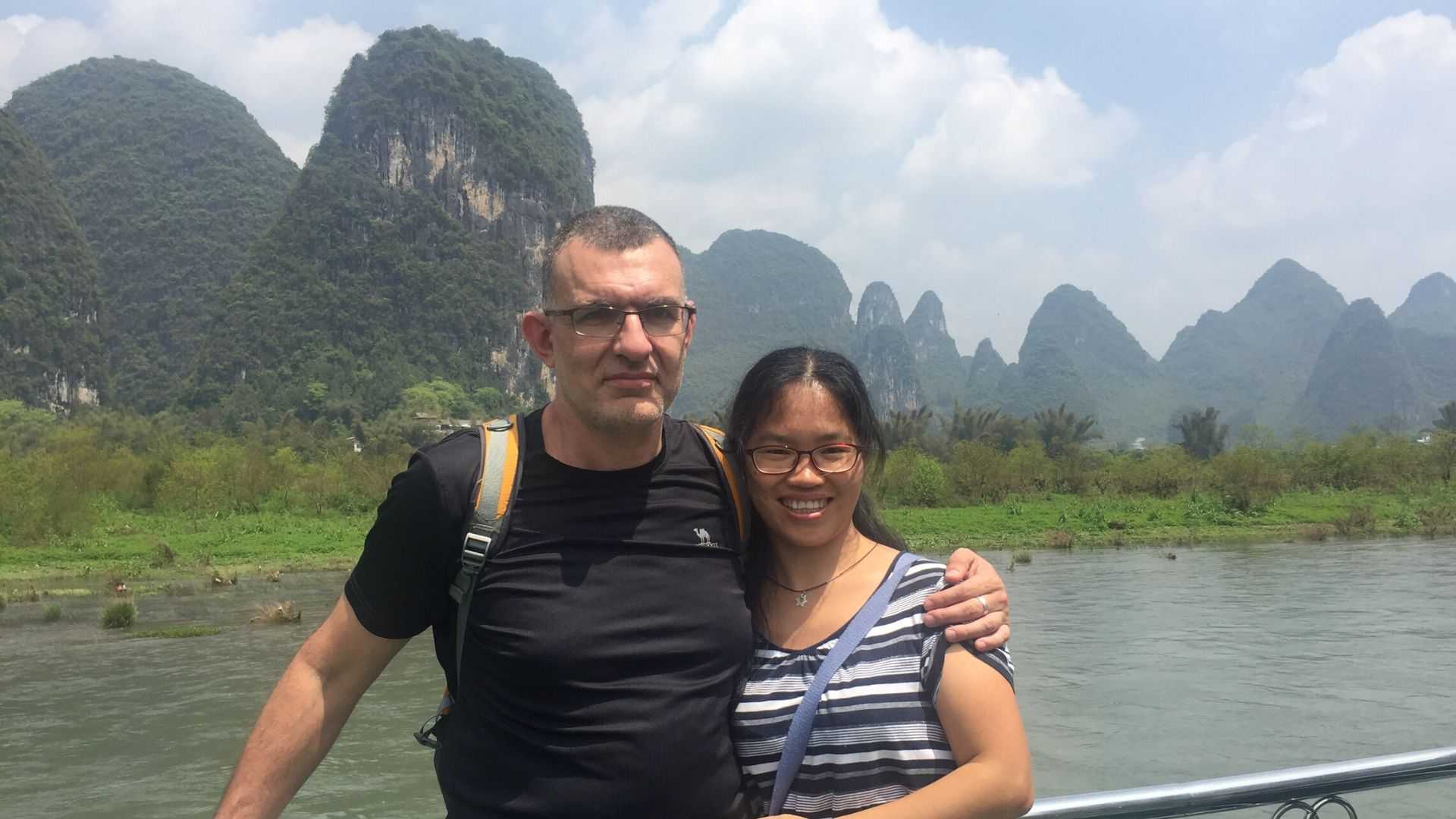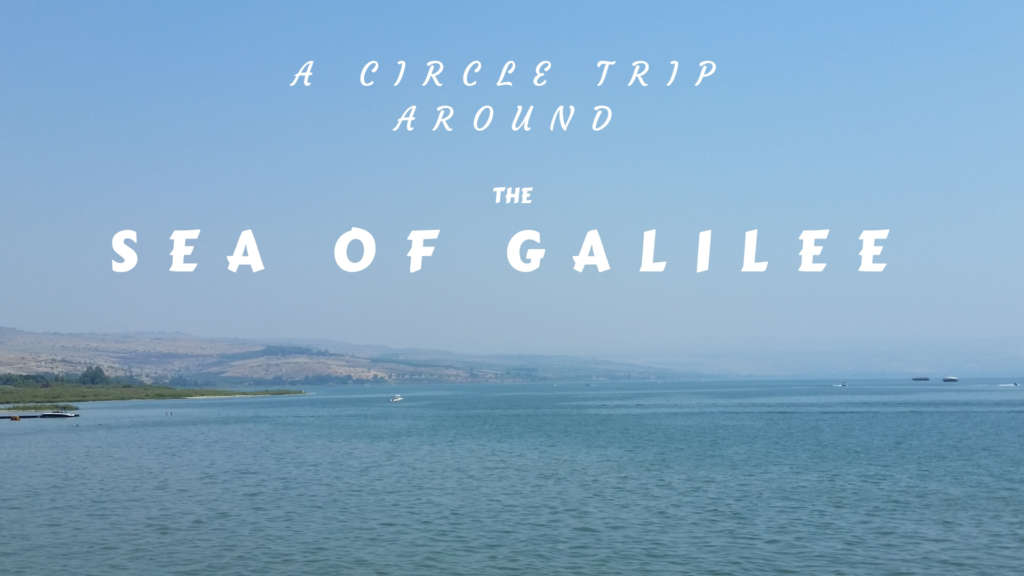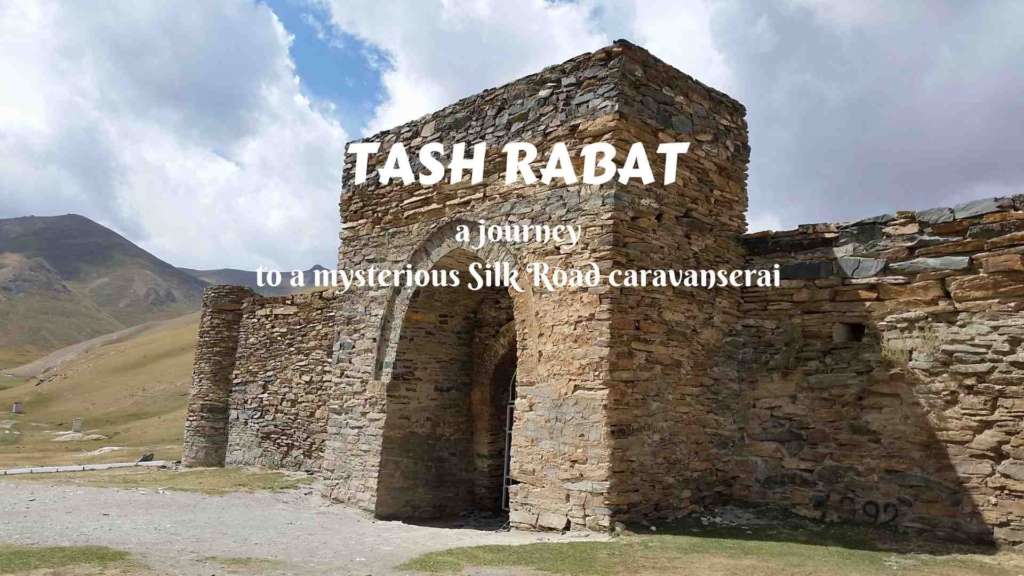Planning your adventure through South Sulawesi? Your journey wouldn’t be complete without exploring Makassar, the province’s energetic and historically rich capital. This comprehensive guide is designed to help you make the most of your visit, whether you’re looking for iconic landmarks, vibrant local culture, or tantalizing culinary experiences. We’ll delve into the top things to do, and must-see attractions, and provide itinerary ideas to ensure your time in Makassar is truly unforgettable.
Table of Contents
Basic info about Makassar
It is always advisable to learn more about a place we travel, and Makassar is no exception. Formerly known as Ujung Pandang, it is one of the largest cities in Indonesia. Makassar is a starting point for trips to many wonderful places in Sulawesi Island and around it but the city itself still has a lot to reveal.
Some geography
Indonesia consists of more than 17,000 islands, and it is divided into two main parts: Western and Eastern. One of the largest islands in Eastern Indonesia is Sulawesi Island —a landmass with four peninsulas that create an unusual shape.
Let’s focus on the southern peninsula. Today, it is a part of South Sulawesi, one of Indonesia’s provinces, and Makassar is its capital.
Makassar is a coastal city, established on the western coast of the South peninsula of Sulawesi. It has emerged on a lowland, between two rivers- Jeneberang and Binanga Tallo. Here, in this area, long before the appearance of modern Makassar, humans started their activities. So, let’s back in time to see how it all began so we can find traces of the history of the city today.
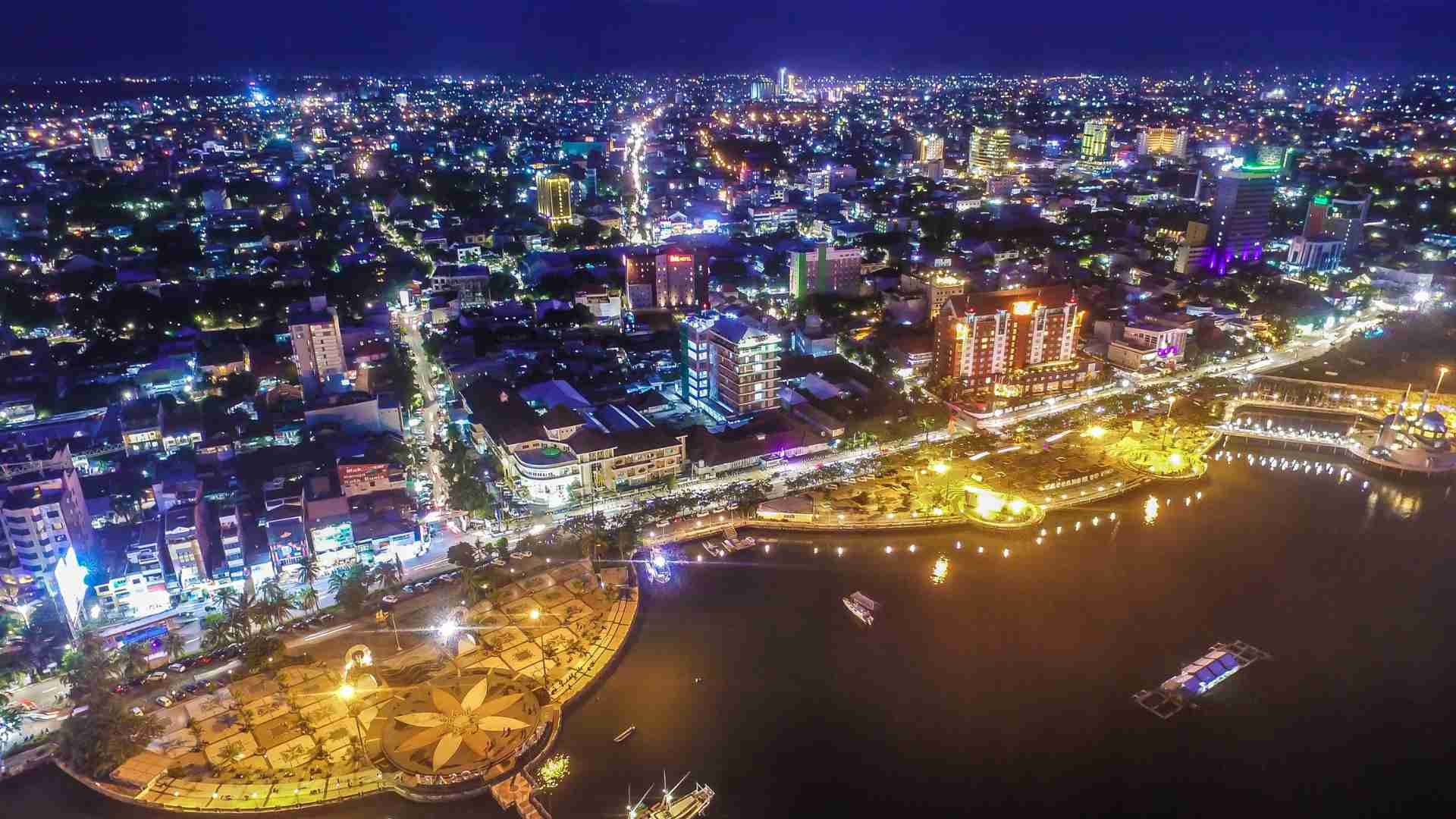
Some history
Let’s divide the history of Makassar and the land where modern Makassar is today into periods.
Prehistoric period (unknown to about 500 BC)
Very little is known about the most ancient people who inhabited the land where today Makassar is located. Probably, they were hunter-gatherers related to the Negritos in some parts of Southeast Asia but it is unclear. We guess that only because the Austronesian people arrived in today’s Indonesia in the middle of the 1st millennium BC, and the only known people before them were Negritos-related inhabitants.
Early historic period (500 BC to 1350 AD)
The Austronesians gradually settled in today’s Indonesia, slowly assimilating the local people who lived there before them. They also arrived in the jungles and swamps between the two Makassarese rivers (Jeneberang and Binanga Tallo). But all we know is that they established here only a few small villages.
There were no large kingdoms but only small local chiefdoms. Some of them eventually grew into kingdoms in the late centuries of this period, when they fell under the rule of the Majapahit Empire from Java.
Pre-Colonial period (1350 to 1730)
One or more of the coastal villages in the land where now Makassar is, gradually grew into a seaport and a larger town. In 1365 the name “Makassar” was mentioned for the first time in a Majapahit’s manuscript. Its port called Bandar Tallo developed in the 16th century. Meanwhile, the small chiefdoms and kingdoms around South Sulawesi gradually merged into larger kingdoms.
One of these kingdoms was Gowa. The Gowa kings controlled the early Makassar and around 1320 built a palace today known as Tamalate. Tamalate Palace was their residence until 1548 (today, there is only a replica of the palace located beside Balla Lompoa Museum).
Around 1545 the Gowa king built two forts- Ujung Pandang, and Somba Opu (the commercial center of the kingdom). From Europe, the Portuguese arrived first but didn’t stay for long. Around 1605 the Dutch arrived too and established a permanent trade post. The whole area was a part of the Gowa kingdom, from 1607 (when the king adopted Islam)- Gowa Sultanate.
During the next more than a hundred years, the Dutch were all the time there but Gowa Sultanate was still independent. The fort built by Gowa was renamed Fort Rotterdam.
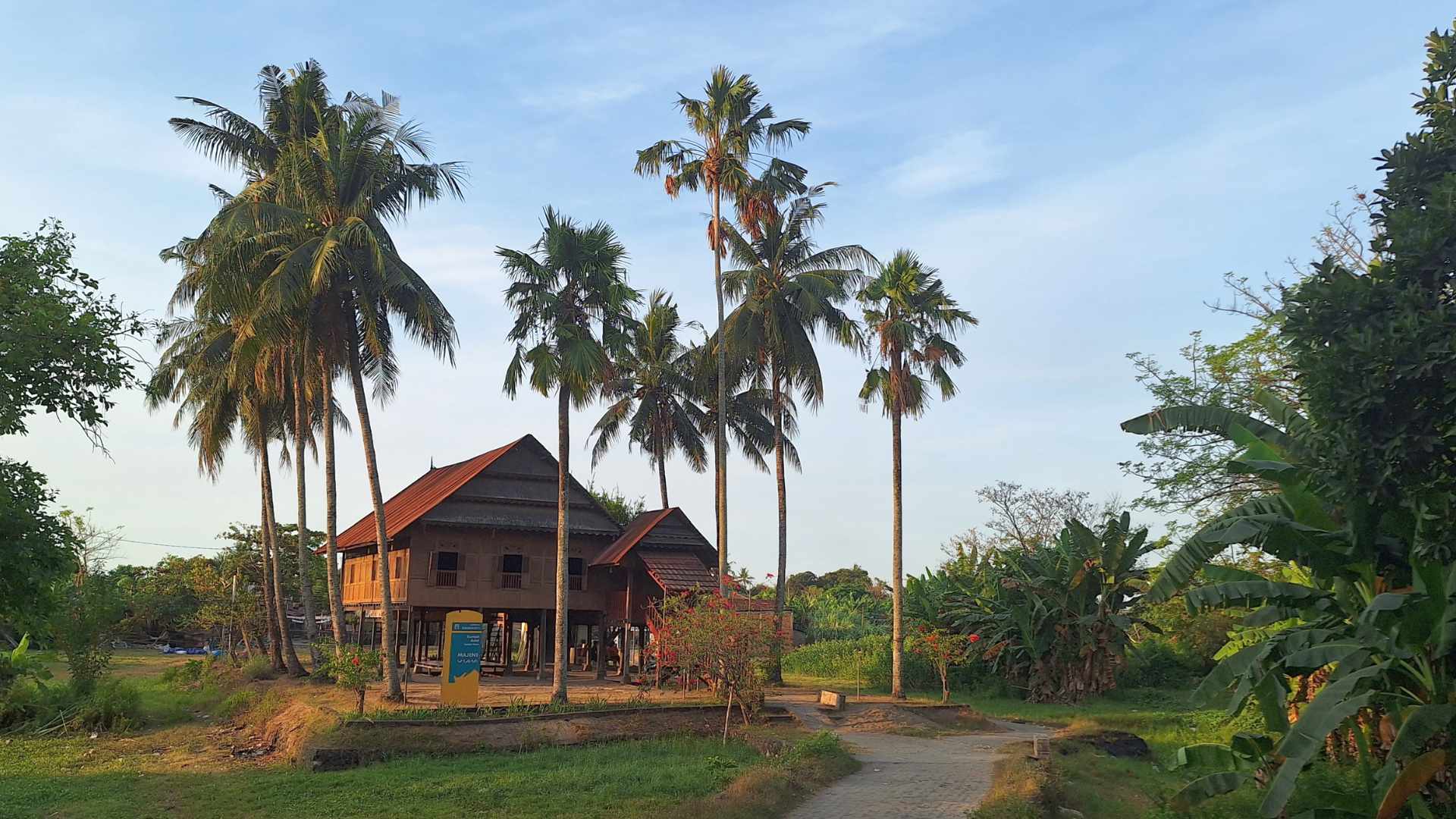
Colonial period (1730 to 1945)
After 1730, the Dutch gradually gained control over the area around Makassar, the whole of Sulawesi Island, and in the 19th century- the whole of Indonesia. Makassar became one of the important colonial centers of the Dutch and its population grew along with the economy.
In 1911, the Dutch terminated the existence of the Gowa Sultanate and Makassar firmly became a part of a Dutch Indie’s regency. In 1942 the Japanese arrived and occupied Sulawesi Island for 3 years.
Modern Indonesian period (1945 until today)
The first years after the Japanese surrender were very turbulent. There was a constant fight between the Dutch and the local struggle for independence. In 1946 East Indonesia was established but in 1950 it was incorporated into modern Indonesia. Makassar became the capital of the established South Sulawesi province.
Since then, the city developed and today it has become the largest city in Sulawesi Island and the whole of Eastern Indonesia. Tourism grew too, although Makassar is still far from the “glory” of Bali as a tourist destination.
Check for flights to Makassar!
Local culture
So, the combination of geography and history gradually formed the modern Makassar. Today, it is a large, bustling city, with busy streets full of cars, motorcycles, trishaws, trucks, and many other types of transportation. There are commercial areas, malls, street markets, residential areas, small streets with various local shops and workshops, and many more.
The inhabitants of Makassar are mostly people from two ethnic groups- Makassarese and Buginese. They are closely related because they have similar origins. However, there are some differences.
Although their languages belong to the same language family, they can’t understand each other and have to learn each other’s languages. On the other hand, their main religion- Islam, and the modern life in Makassar have created many new similarities in their lifestyle, especially among the young people.
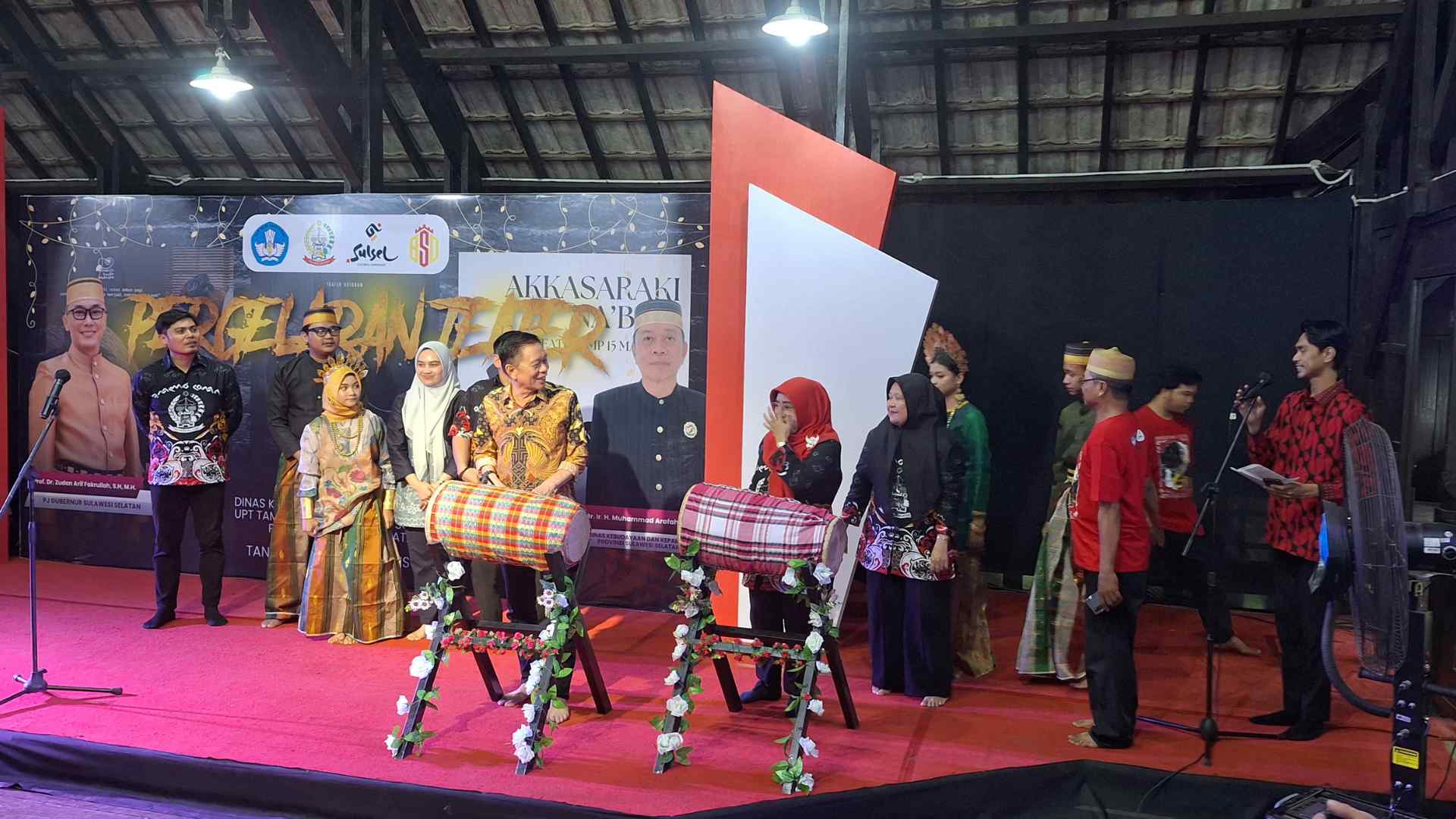
Our trip to Makassar
This exotic geography, relatively off-the-beaten path, far from the most touristy places (like Bali) drew our attention and we chose South Sulawesi as a destination for one of our trips. The starting point of this trip was Makassar.
But of course, we didn’t want to skip Makassar. We knew that this city had not only a lot to reveal but also it was a good place for initial diving into the local culture. So, we planned 2 nights and 3 days, especially for exploring Makassar- the first two days were at the beginning of our trip, and the last day- was at the end of the trip.
Below are the things we did in Makassar and a bit more things that we could do if we stayed there for a longer time.
 Exploring the Earth is fantastic! However, there are various hidden dangers that may ruin your journeys. Don’t allow that to happen, or at least reduce the consequences as much as possible!
Exploring the Earth is fantastic! However, there are various hidden dangers that may ruin your journeys. Don’t allow that to happen, or at least reduce the consequences as much as possible!
Include a travel insurance as a part of your trip preparation by pressing the button below:
12 Things to do in Makassar
So, let’s start exploring Makassar before leaving it for more adventures in South Sulawesi and beyond! Now, we will focus only on the city itself and will not include things to do far from Makassar, except for the nearby small islands.
1.Take an initial stroll around Makassar- on foot and by trishaw
This is especially good for those who visit this part of the world for the first time. Makassar as a gateway to South Sulawesi is an excellent place to adapt to the local reality and culture. So, don’t stay in the hotel or don’t just think about a few points of interest and one or two restaurants, but better take a walk around the central part of the city!
Yes, we know, it is hot, after all, Makassar is not far from the Earth’s Equator. But you can do it early morning or at dusk. The main purpose is just to see the local life- local people and their outdoor lifestyle, as well as to adapt to the local traffic. Take a visit to a local shop, buy something to eat (for example, in some Circle K mini market), and look at the people- almost certainly some of them will say “Hello!” to you.
Try a trishaw! You can see trishaws everywhere in the center. It is an exciting way to move around the streets like sitting on a moving bench!
If you haven’t pre-arranged your Indonesian SIM card yet, you should go to Telkomsel office (don’t go to local shops- the SIM cards they sell almost never work!) and register for a real, working SIM card. Since their office is far from the center, better to take Grab (the most convenient way). I did it by Grab motorcycle- one more way to explore the city and enjoy the local city views around me.
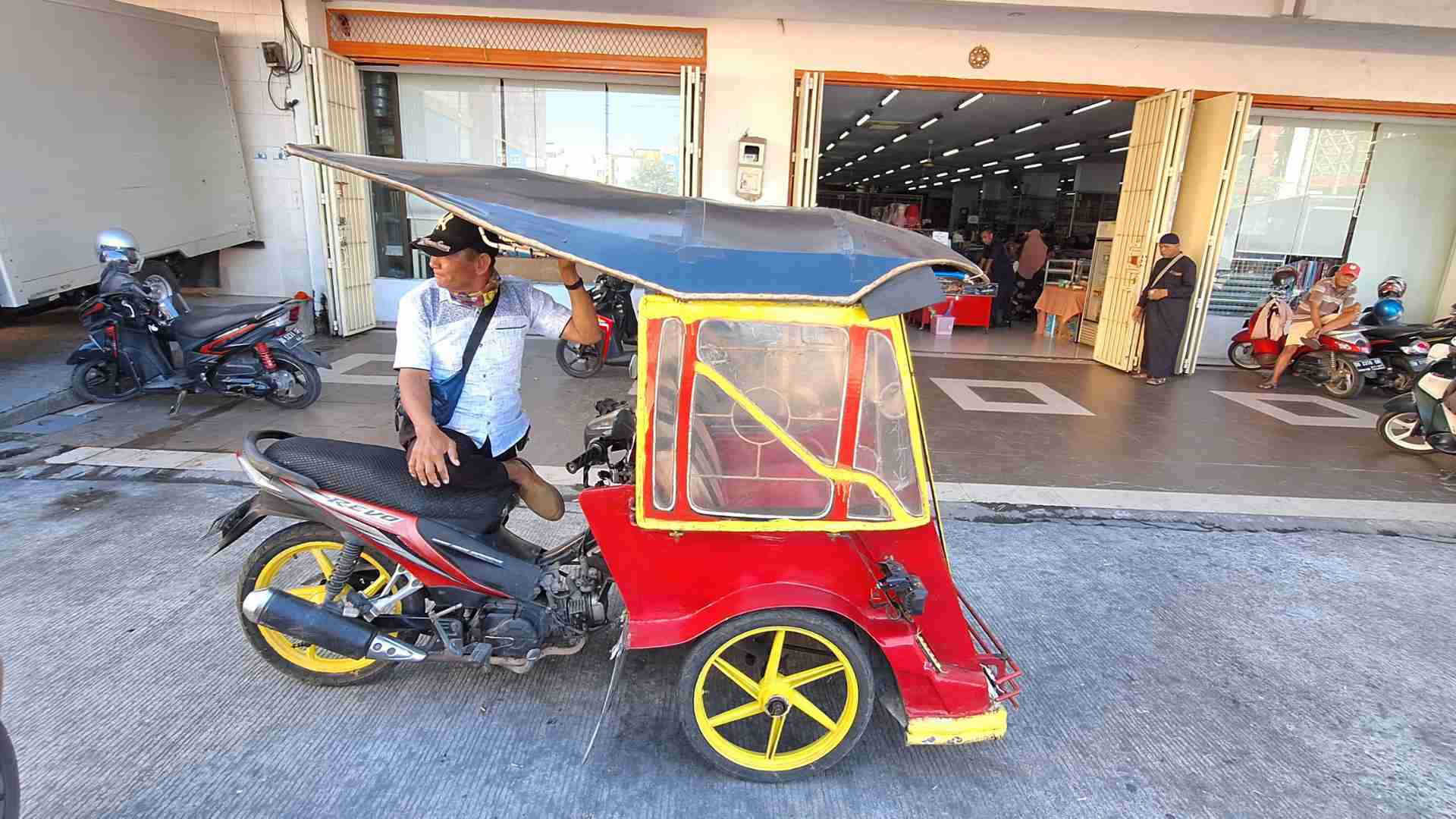
2. Go shopping or just wander around Makassar malls and markets
This is something that you should do mostly to get more impressions of the local lifestyle. In other words- it is not necessary to buy this or that but just to dive into the local atmosphere. As we all know, markets and malls are excellent places to experience the local culture everywhere in the world.
This is especially true for street markets. You can see various local products- in Makassar, there will be a lot of fish. Yes, smell is inevitable but the atmosphere is worth trying.
One of the best places to go is Senggol Night Market. It is crowded at evening, full of exotic products, smells, and vibes.
Malls are something different but still worth visiting. They are modern versions of a street market. There is comfortable air conditioning inside, and they are clean, with a lot of shops. Besides, here you can find some of the best restaurants in the city.
The most popular mall you should visit is Trans Studio Mall Makassar– one of the largest malls in Southeast Asia. Here you can see not only various shops and restaurants but also a theme park, movie theater, and more entertainment.
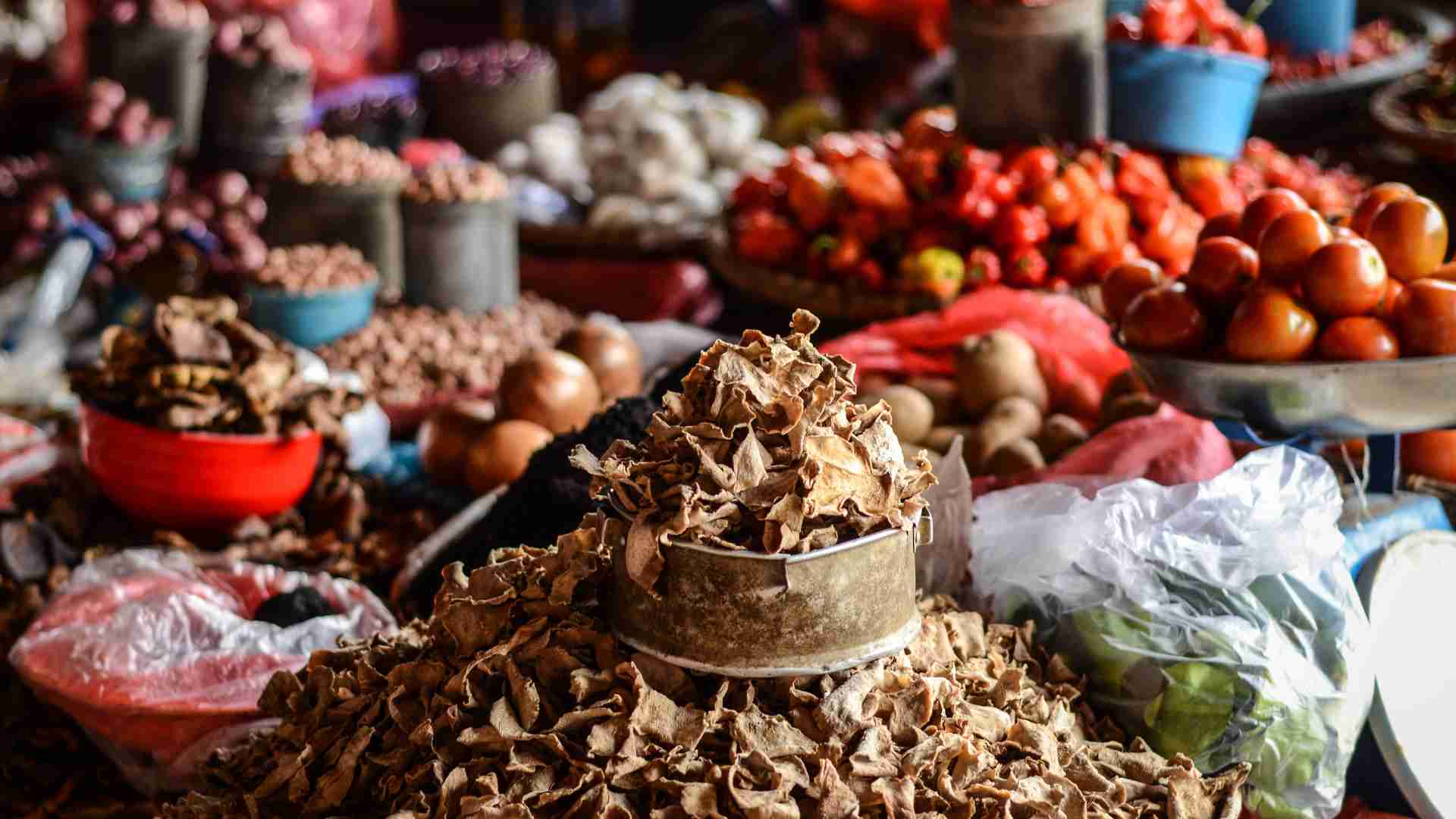
3. Try Makassar’s cuisine
Indonesia is well-known for its exotic spicy food. It is a Muslim country so there is no pork almost anywhere (with only a few exceptions). But there is a lot of fish- after all, it is an island country. And since Indonesia consists of more than a thousand (!) ethnic groups, cuisine is famous for its great diversity.
Makassar has its specific local version of Indonesia’s cuisine. So, when you arrive in the city, don’t think about McDonald’s or KFC. Instead, try the local food, not only in the hotel but most importantly- in the city. Take a look at Miss Tam Chiak’s Ultimate Makassar Food Guide to find the best restaurants where you can try local food!
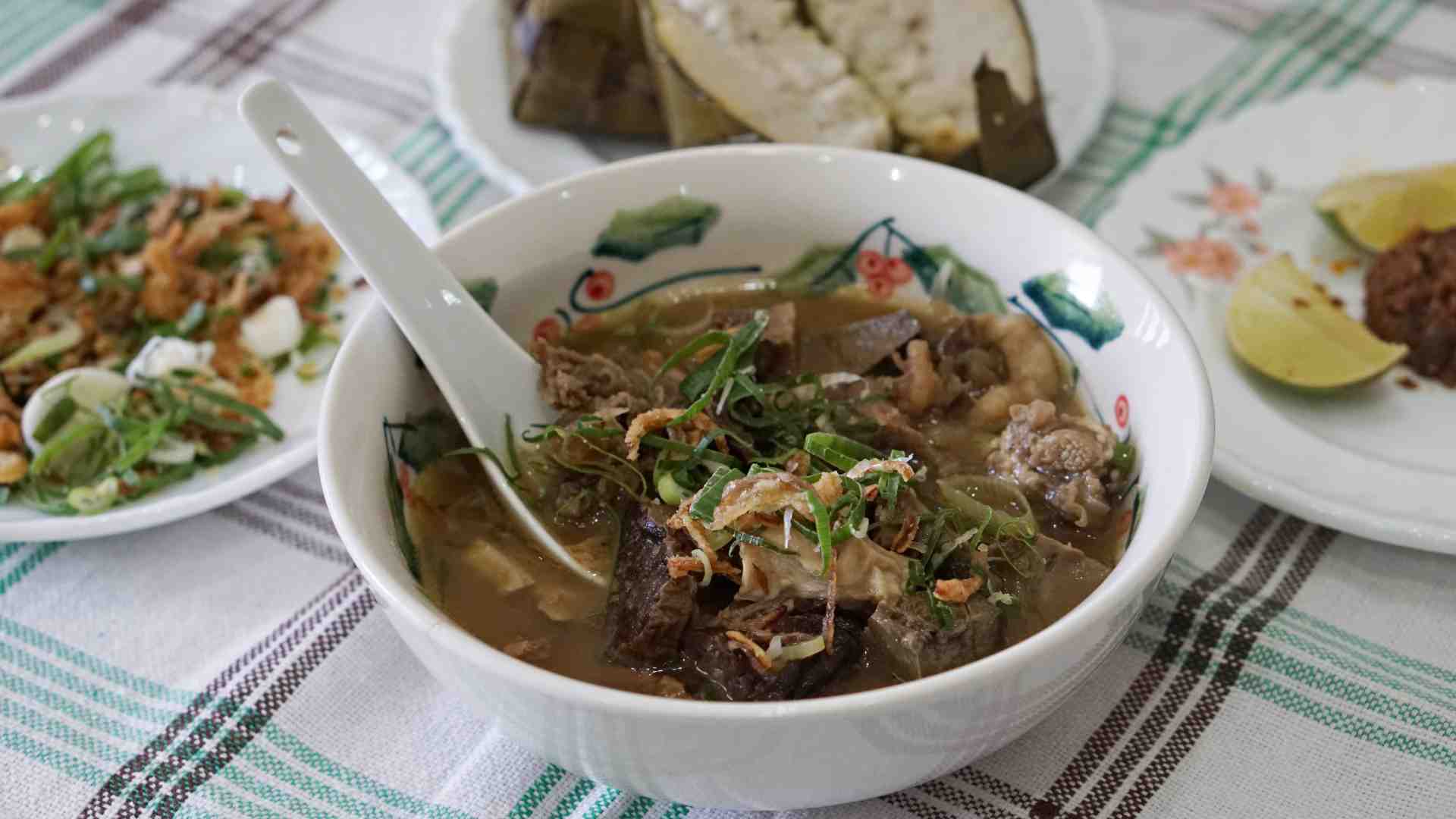
4. Enjoy the scenery of Losari Beach
Now, we move to the specific points of interest in Makassar. Losari Beach is one of the most iconic and central places in the city. It is not a sandy beach and you can’t swim there. Actually, it is a beautiful coastal promenade with landmark signs and panoramic views of the city’s coast and the 99 Domes Mosque on the peninsula in front of the coast.
This is a nice place for photos. Here you can also see some traditional Phinisi (Pinisi) boats– a UNESCO Intangible Cultural Heritage, today designed for tourist boat trips. In the evening, you can enjoy some open-air cafes and restaurants. And you can combine all of it with a stroll in the nearby streets- although Makassar doesn’t have an “old town”, this area is still the oldest part of the city.
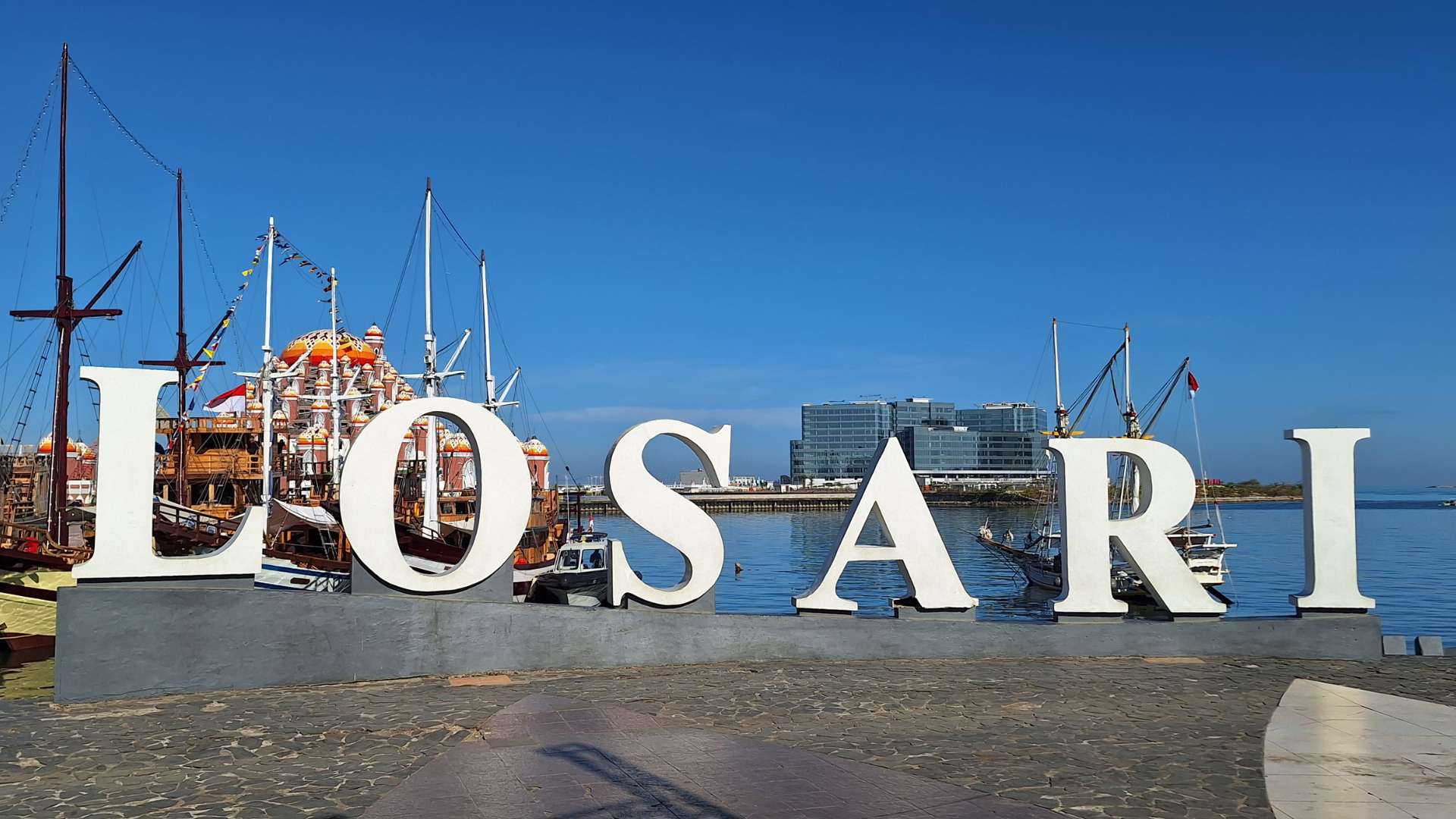
5. Dive into the colonial history- Fort Rotterdam and Makassar Museum
Not far from Losari Beach is Fort Rotterdam- one of the main landmarks of Makassar. As mentioned above, it was initially built by the kings of Gowa before adopting Islam. Initially, the fort was much smaller and was called Ujung Pandang. Later, in 1634, it was rebuilt as a larger fort, a part of the fortification project in Makassar.
Soon after that, only about 40 years later, the Dutch ceded it and renamed it Fort Rotterdam. They also built Dutch-style buildings inside that can be seen today. Dutch used the fort as a military and government headquarters as well as a prison, until 1930. Japanese also briefly used it as a scientific unit, but then it was abandoned.
After 1970, Fort Rotterdam was restored and turned into a tourist attraction as it is today. You can walk inside, and enter its Dutch-style buildings. One of them is turned into a museum called Museum Negeri La Galigo, presenting some historical and cultural artifacts from South Sulawesi.
Entrance fee: free. Only for Museum Negeri La Galigo- 7,500 IDR.
Working hours: 8:00 am to 6:00 pm. Museum Negeri La Galigo- only from 8:00 am to 12:00 pm, Monday closed.
In addition, there is another small museum, just behind Fort Rotterdam (about a 7-8 min walk), called Museum of Makassar. It also presents some artifacts from the modern history of Makassar, as well as models with traditional clothing from the main ethnic groups in South Sulawesi (actually, the most interesting part).
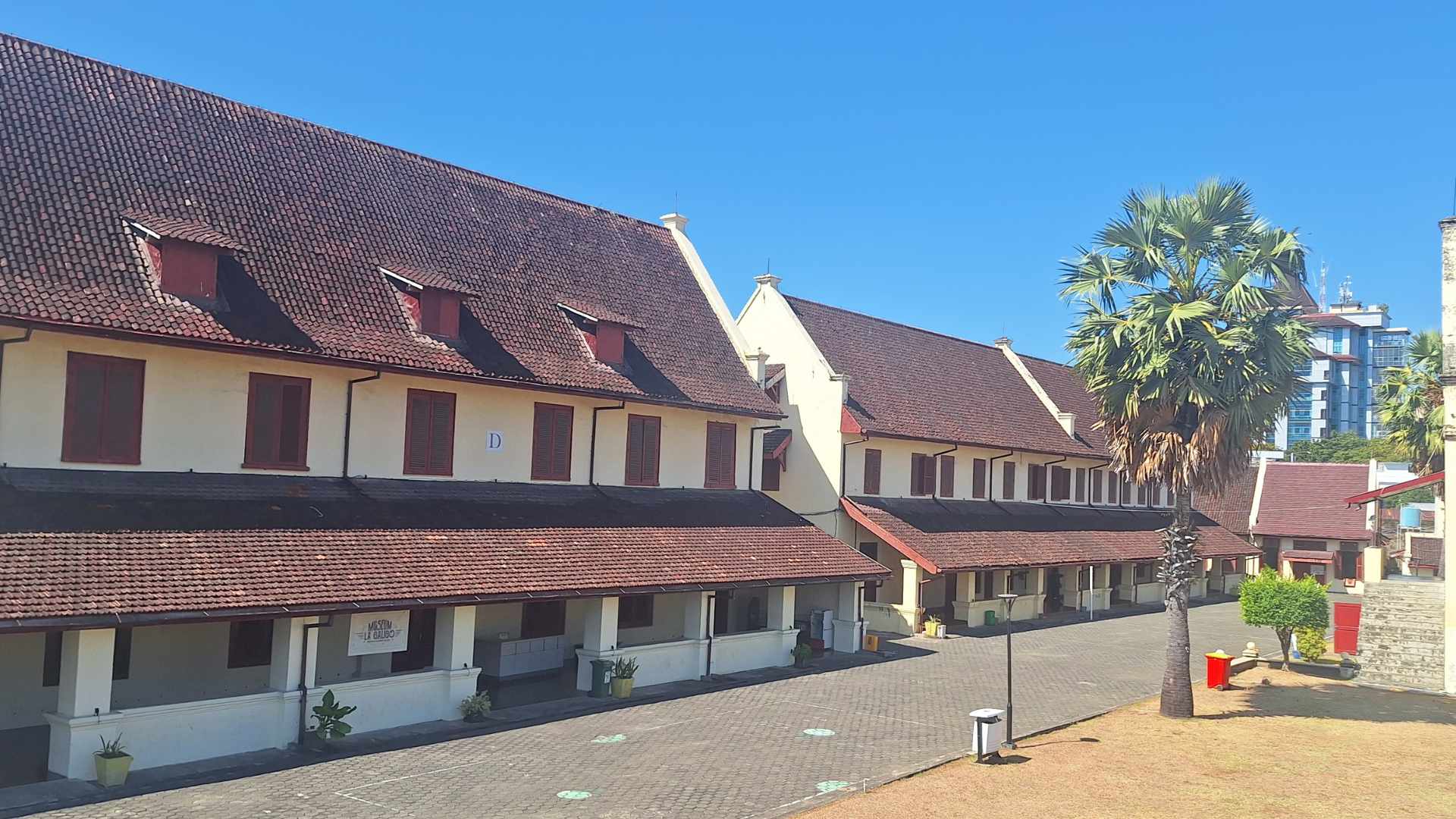
6. Watch the bustling daily life of the local Phinisi boat fishermen in Paotere Harbour
Paotere Harbour is located on the northern coast of Makassar, and it is the oldest seaport of the city. It has existed for at least 8 centuries, probably more.
Of course, since its establishment, it was constantly growing and renovated. But it still keeps some traditions from the past, most notably- the local Phinisi boats. They are not “dead museum artifacts” but they are actively used today in daily fishing life. And Paotere Harbour is the right place in Makassar to see them. Yes, you will dive into a local fishing smell but it is a part of the experience.
So, get a Grab and go to the harbor. At the entrance, you will pay a small entrance fee of 2,000 IDR. Once inside, you can walk around and watch the harbor scenery around. There is also a small amusement park where sometimes you can see live music performances. Finally, it is also a nice place to watch the sunset in the west.
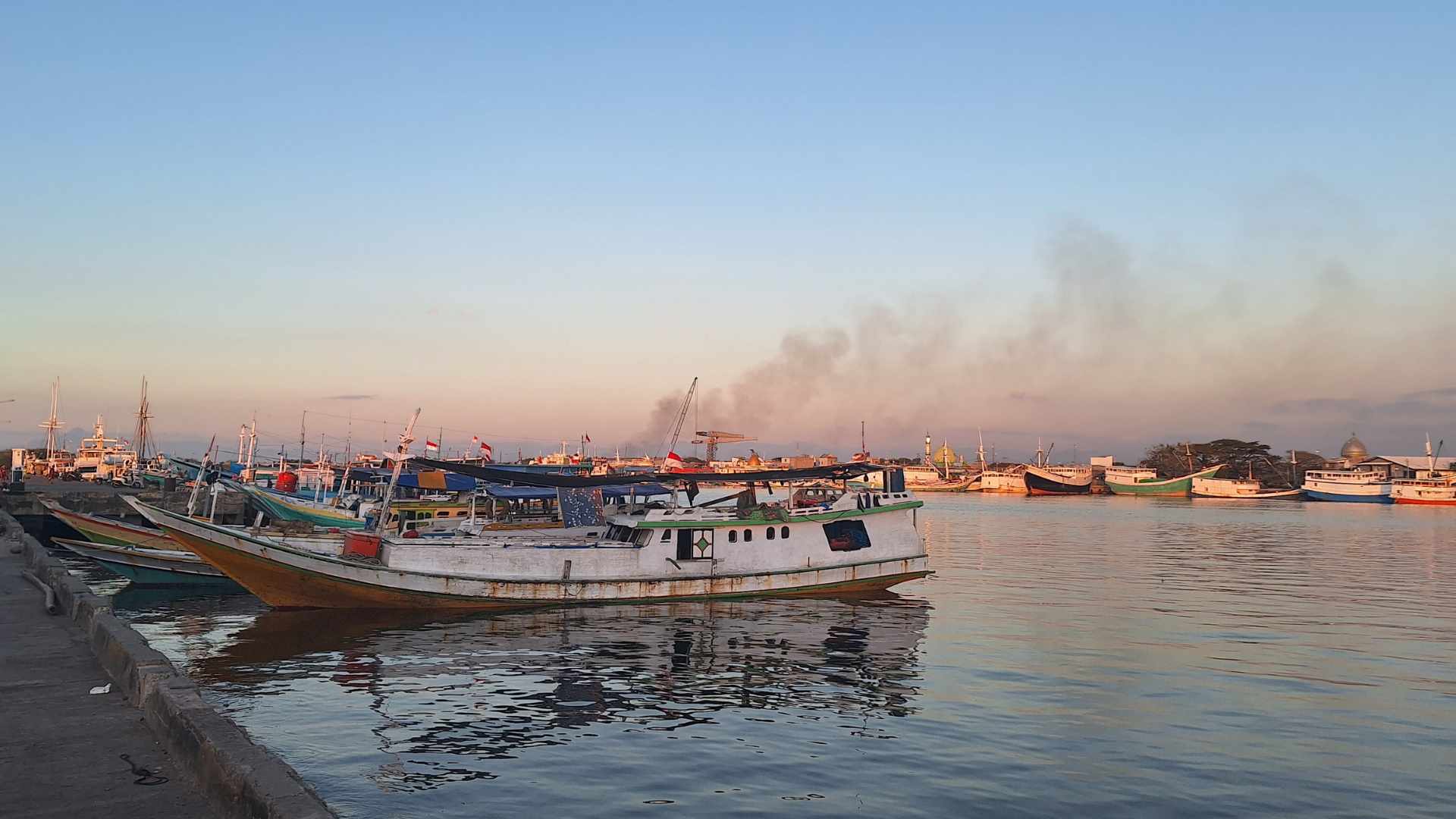
7. Visit the newest scenic landmark of Makassar- 99 Dome Mosque
Its full name is Asmail Hasna 99 Dome Mosque or Masjid 99 Kubah in Indonesian. It is the most prominent object that you can see from Losari Beach and not only.
The construction of 99 Dome Mosque started in 2017 and it was open in 2022. Its most unique feature is its architecture- it consists of 99 domes (presenting the 99 names of Allah in Islam). The mosque is an active religious center with regular religious activities inside. But what makes it one of the landmarks of Makassar is its shape and the whole scenery around it.
99 Dome Mosque is best accessible by Grab from the center. It is established on an artificial peninsula, a reclaimed land in the area of Losari Beach. There is a road to the mosque but if you want to reach it on foot, you have to walk at least 15-20 min under the hot sun.
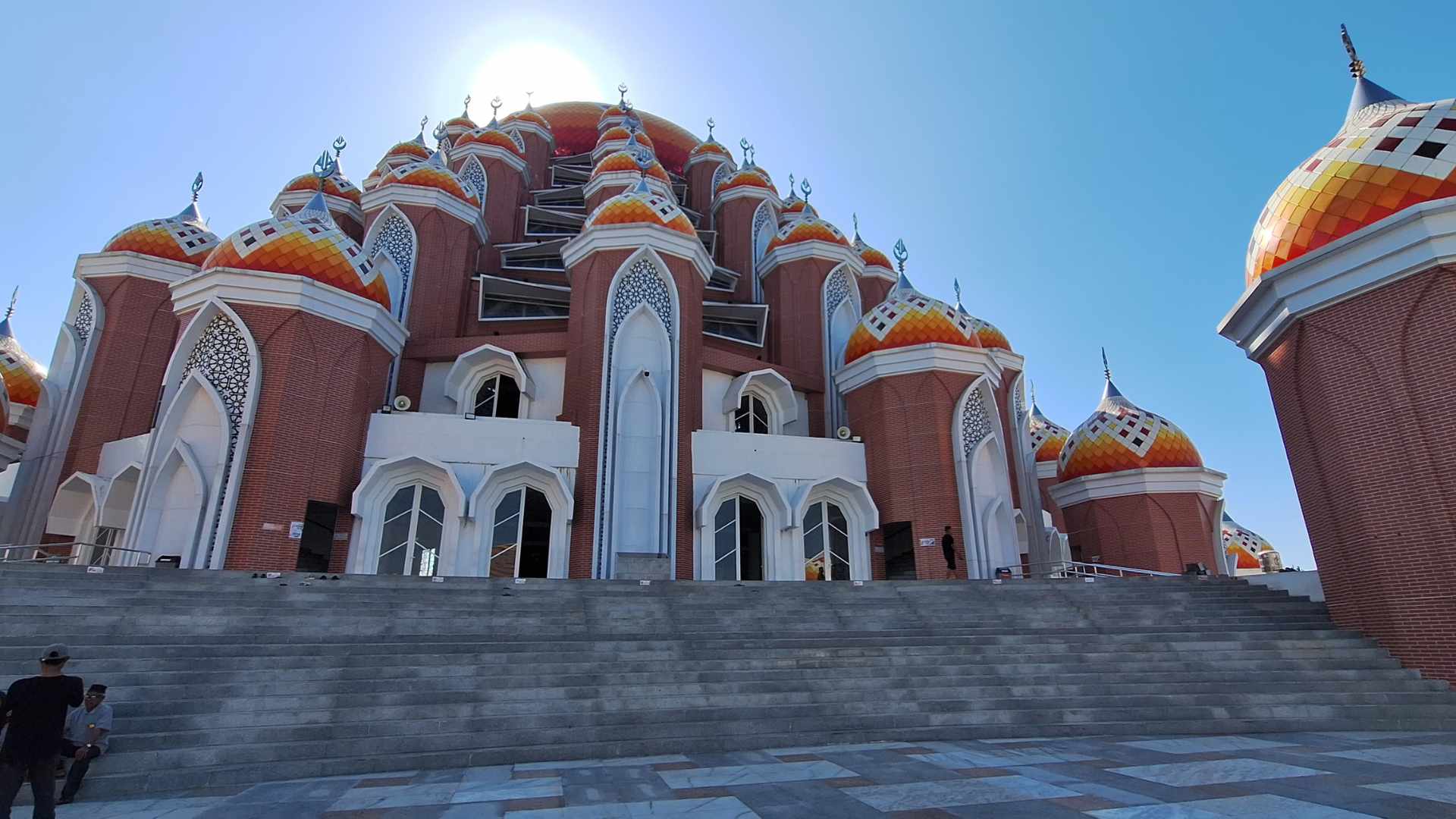
8. Another touch of history- Diponegoro Tomb
This is another historical site in the center of Makassar, and you can combine it with strolling around the streets or on the way to the other sites.
Prince Diponegoro is one of the national heroes of Indonesia. He was a son of the Javanese Sultan Hamengkubuwono III who reigned in Yogyakarta between 1810 and 1814. Diponegoro rejected Sultan’s position and in the next decade started fighting against the Dutch in Java Island. However, his forces were finally defeated and he was imprisoned by the colonial rulers.
He was moved to Makassar, where he spent 22 years of imprisonment in Fort Rotterdam. Diponegoro died in 1855 and was buried in the tomb that we know today. Since then, he has been praised as a national hero until today. You can visit his tomb- a small building with graves of Diponegoro and his family in the yard- a good opportunity to travel in time to this chapter of Indonesian history.
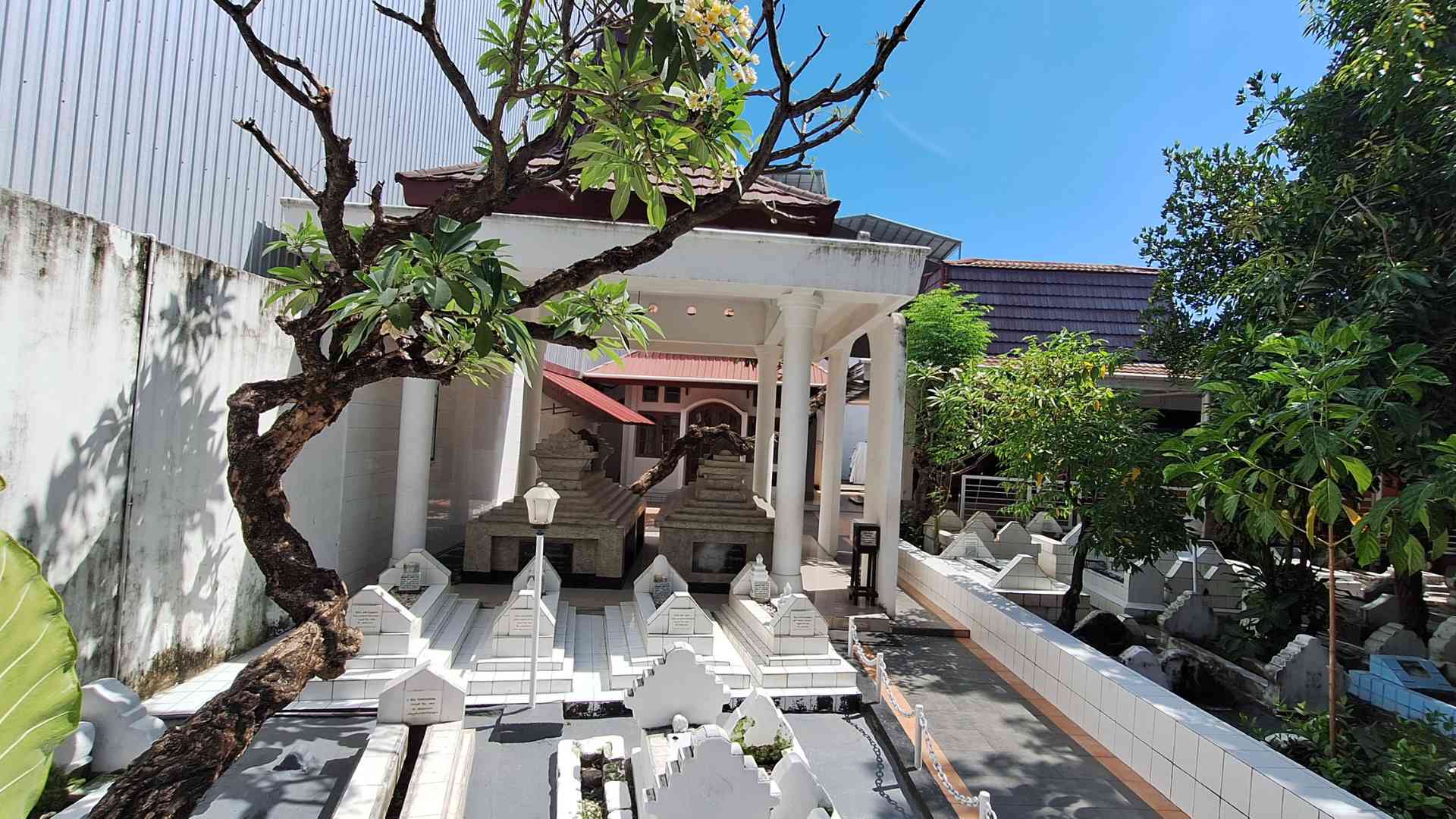
9. Touch the Gowa Sultanate traditions- Museum Balla Lompoa and Tamalate Palace replica
Now we are moving far from the center. This site is located in the southeastern suburbs of Makassar, and it takes us back in time to the pre-colonial Gowa Sultanate times. In the 14th century (probably even earlier) the early kings of Gowa chose this area to build their first palace. Later, in 1545, they moved to another location and built another fort with a palace- Somba Opu.
Today, the original Tamalate Palace is lost. There is another location, about 2,5 km north of Balla Lompoa called Kompleks Makam Sultan Hassanudin, where you can see tombs of the late Gowa Sultans. Besides the tombs, you can still see some unclear remnants- these are the ruins that are believed to be the original Tamalate Palace.
But if you want to see what the palace looked like, you better visit the replica next to the Balla Lompoa Museum. And of course, visit the museum itself- it is a small museum, dedicated to the Gowa Sultanate and you can see some artifacts and useful information about Gowa and its history.
Entrance fee: free.
Working hours: from 8:00 am to 4:00 pm.
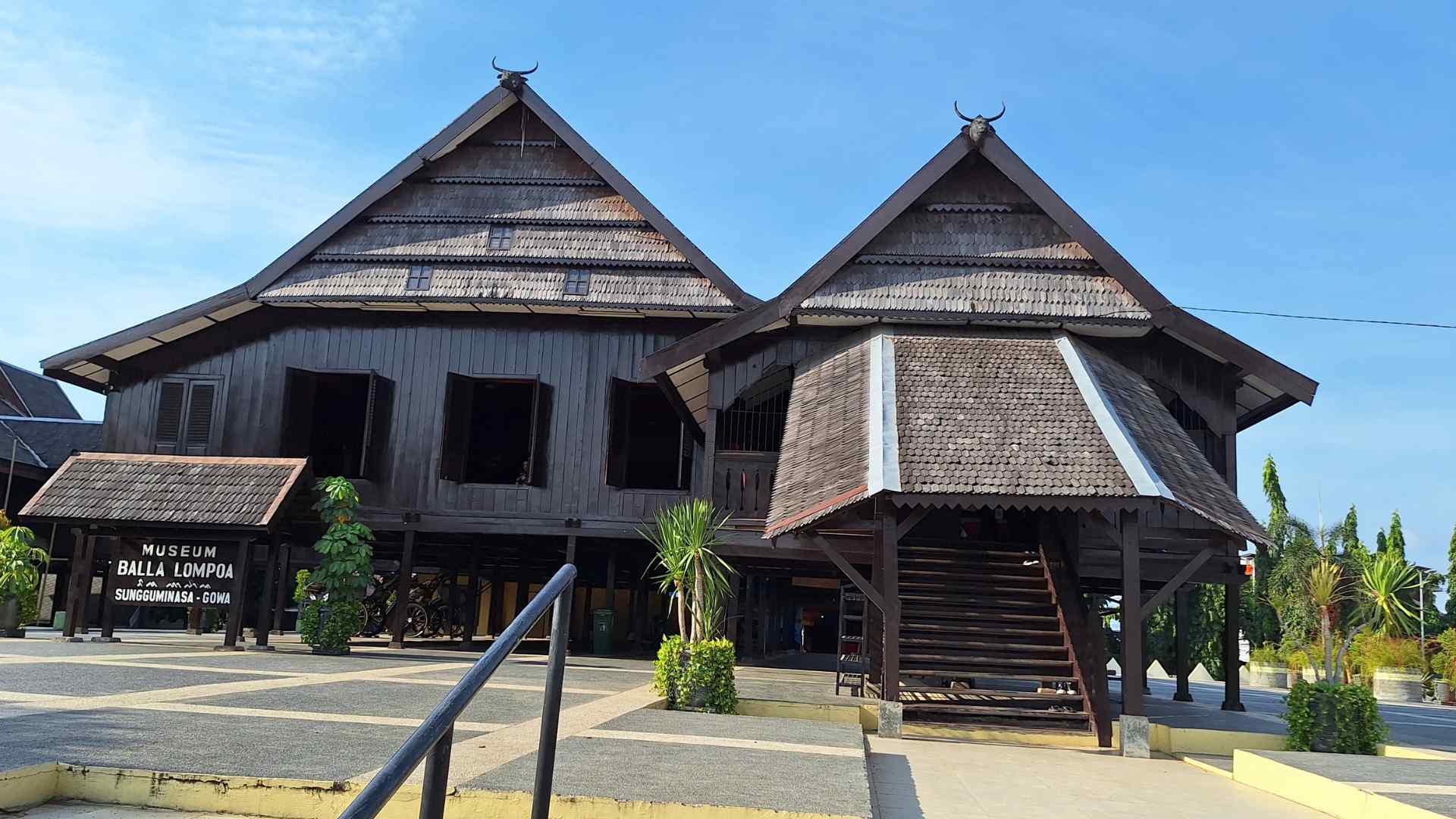
10. Move to the next historical era in a beautiful park- Fort Somba Opu
Now we move to the west-northwest. If you open the map, you will see a triangle-shaped island formed between two branches of the Jeneberang River that flow into the sea. Here is the site of Fort Somba Opu- the second residence of the kings of Gowa. This time, it is not only a palace but a fort. Today, you can see a part of its walls (now restored).
Somba Opu was built around 1545 and it is known as the strongest fort ever built by Indonesians. It existed until 1669 when it was sacked by the Dutch in one of the most difficult battles ever taken by Europeans in Southeast Asia.
After the Dutch conquered the fort, they destroyed it and abandoned its ruins. The remnants of Somba Opu were discovered only recently, after 1980. The fort walls were partially reconstructed and the area around it was formed as an open-air museum and cultural complex.
It is a pleasure to walk around Somba Opu. You can see traditional houses presenting local ethnic groups’ architecture. There are regular cultural events and life performances in one of the houses- Baruga Somba Opu (I had the pleasure of seeing such a cultural event). There is also a small museum called Karaeng Pattingalloang that presents artifacts from Somba Opu historical era.
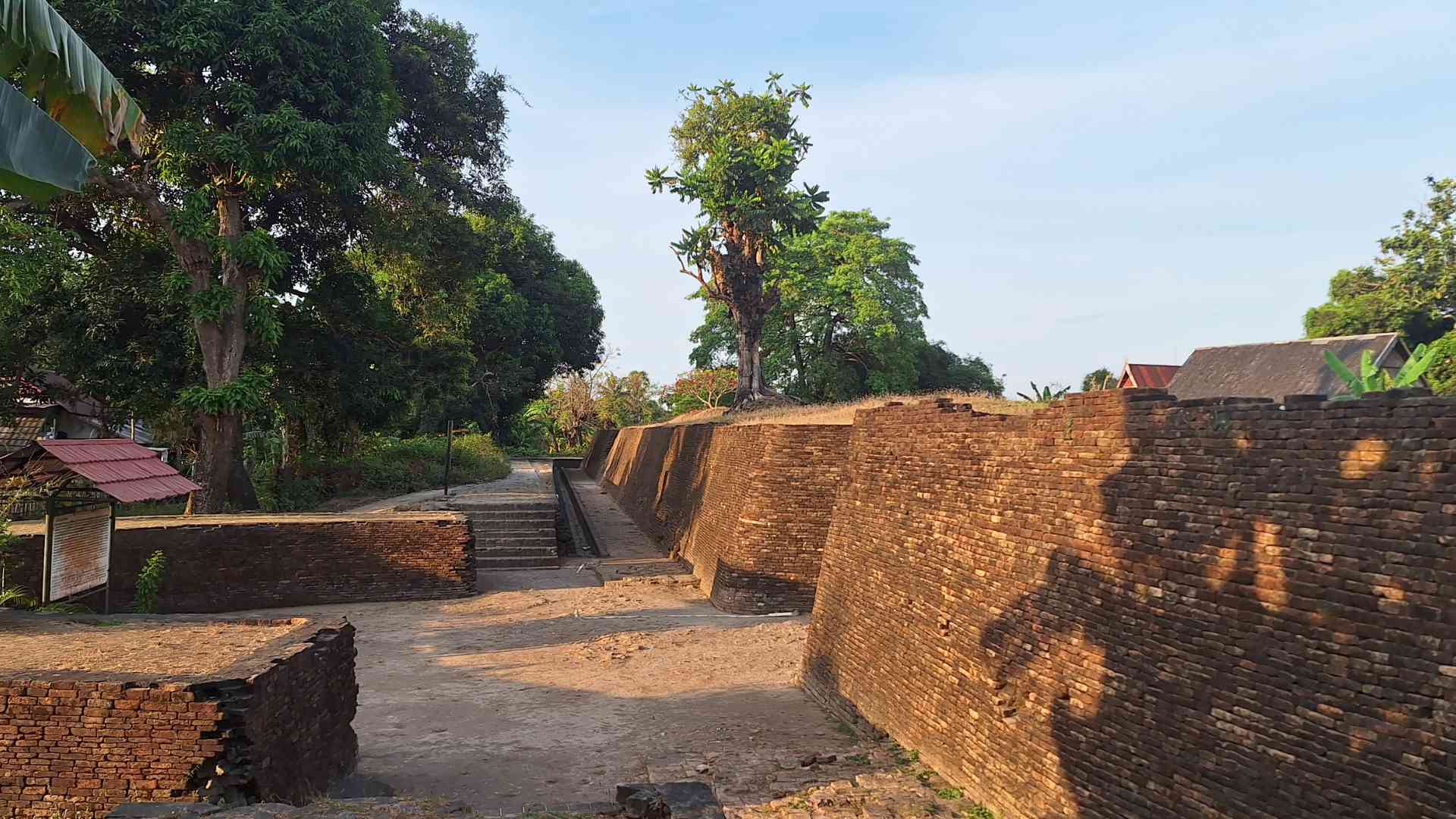
11. See a real beach in Makassar- Akkarena Beach
We didn’t try this but you can do it. Akkarena Beach is the closest real sandy beach to the center of Makassar. It is not a perfect “tropical paradise” and definitely not the most beautiful beach in South Sulawesi but it is worth visiting as a first glimpse of the tropical sea around Makassar. Or at least, it is a nice place for relaxation.
Akkarena Beach is on the same triangle-shaped island where Somba Opu is located. However, this island is relatively big and you have to walk almost an hour from Somba Opu to the beach, so better take a Grab from there.
Today, there are some hotels, resorts, restaurants, cafes, and amusement parks beside the beach like Adventure Offroad Park and more. You can enjoy beautiful coastal views with a tropical vibe. It is a favorite place for locals to relax and of course, you can try it too.
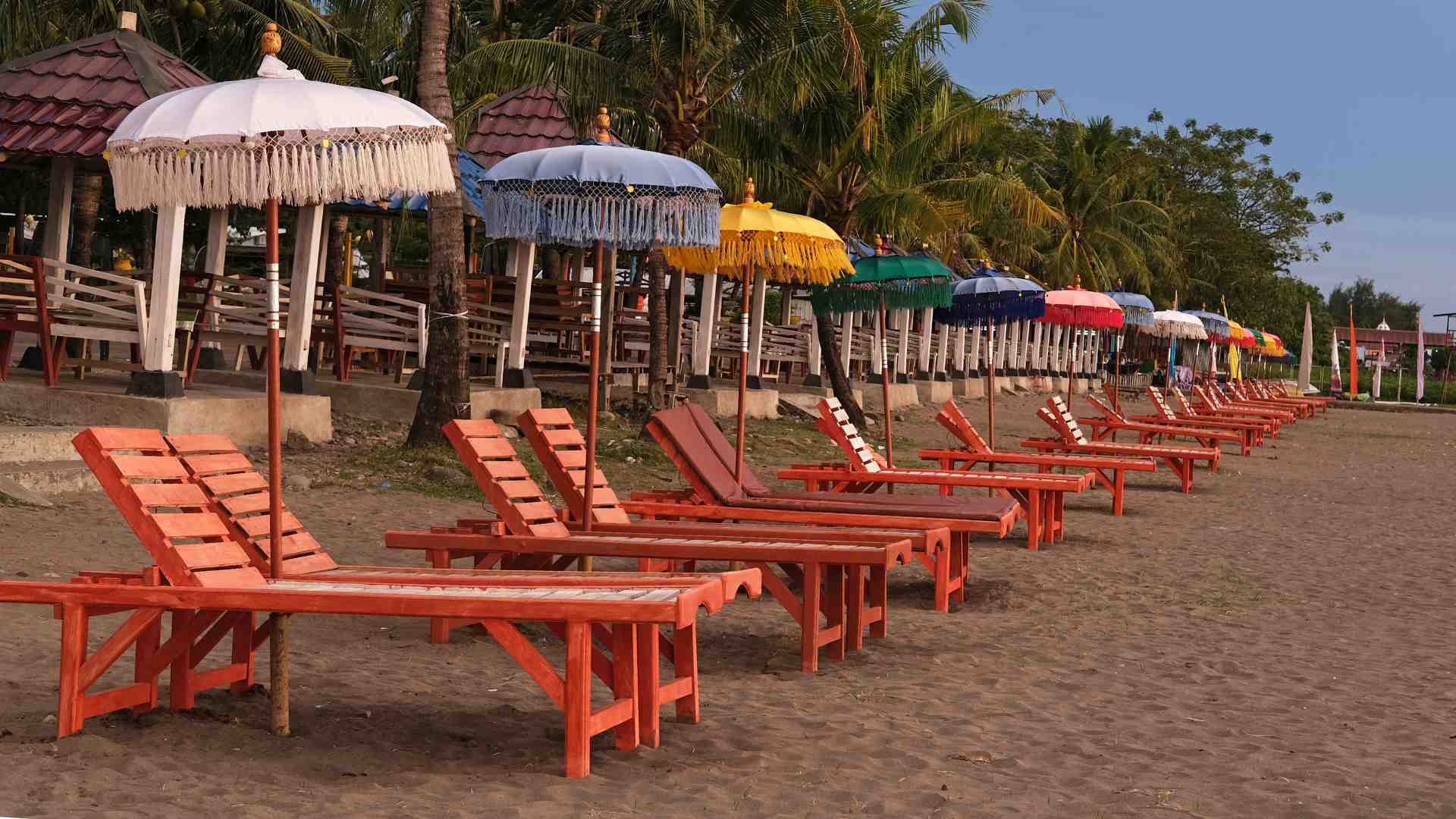
12. Go on a boat trip to Samalona and Kodingareng Keke islands
Although this can be considered as an “out of Makassar” experience, we can still include it as a part of your Makassar things to do, simply because if you go to other places like Rammang Rammang or Leang Leang, you can just proceed further without returning to Makassar. But a boat trip to Samalona and Kodingareng Keke islands is a two-directional trip from the city.
You can see these islands from the airplane if you come from Jakarta or Kuala Lumpur, right before your plane descends to Makassar Airport. This is the Pabbiring Islands- a part of the Spermonde Archipelago. It is a group of 120 islets and sand cays located west of Makassar and further. Some of them are inhabited, with small villages on them.
Samalona and Kodingareng Keke are two of these islands- both uninhabited. Samalona is a small islet covered by a forest and turned into a resort 8 km west of Makassar. Kodingareng Keke is located another 8 km further west and it is a treeless sand cay only with a wooden tower and a wharf. The two islands are great places for swimming, snorkeling, and even scuba diving in the crystal clear sea waters.
You can easily find a boat trip to Samalona only or to both islands. Boat captains are waiting in front of Fort Rotterdam, in Losari Beach, or beside the 99 Dome Mosque. The price is usually between 400,000 to 800,000 IDR (and you can negotiate). The whole trip is usually about 6-7 hours (from early morning to early afternoon) but you can choose to stay for one or more nights in Samalona.
Of course, you can go to any other island in the archipelago and most likely, you can find a captain who would agree to take you there but Samalona and Kodingareng Keke are the most popular ones, so better start first with them, at least for an initial experience (if you are a first timer)!
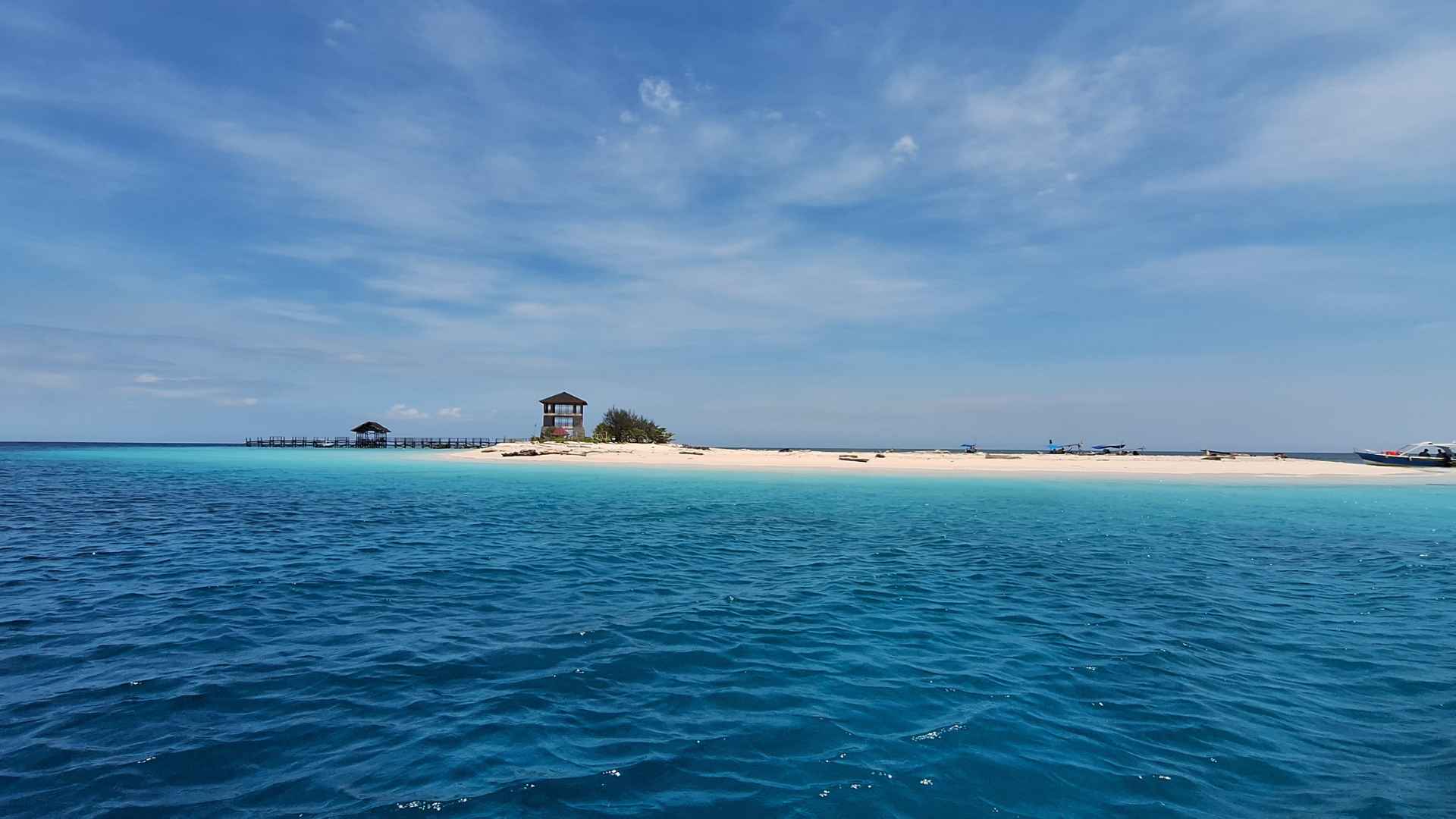
Useful tips
All of the above is enough big reason to plan a 2-3 day Makassar exploring. But before doing it, let’s take a look at some useful tips.
Transportation
There are several ways to move around Makassar. There is no standard “public transport” of buses (with route numbers) like in most cities in the world. In other words, public transport in Makassar is not so popular. Fortunately, there is a convenient solution for foreign visitors.
Check for flights to Makassar!
The first and most convenient option is to use Grab (there is another app called Go-Jek but Grab is easier to use). Download it on your phone, register, and you are ready to roam almost everywhere around the city at prices cheaper than the prices of standard taxis. You can travel by car (more expensive but most comfortable, usually air-conditioned) or by motorcycle (cheaper and more exciting for some people).
Other options are “pete-pete” (local minivans). These are the cheapest options, usually used only by locals. Of course, foreign travelers can use them too but they have their fixed routes that you need to know.
In recent years, the government launched a new comfortable bus network called Trans Mamminasata- with big air-conditioned buses, again relatively cheap. However, it is still in the initial phase of its development and there are only two established routes.
There are also normal taxis but they are usually more expensive than Grab so we never used them.
Finally, you can use a trishaw, called “becak”. Actually, it can be used more as an attraction rather than a “normal transport” because it is slow and usually doesn’t go too far. Yes, since it is an attraction, it can be a bit more expensive but still worth trying, especially for short distances between Fort Rotterdam, Losari Beach, or Diponegoro Tomb.
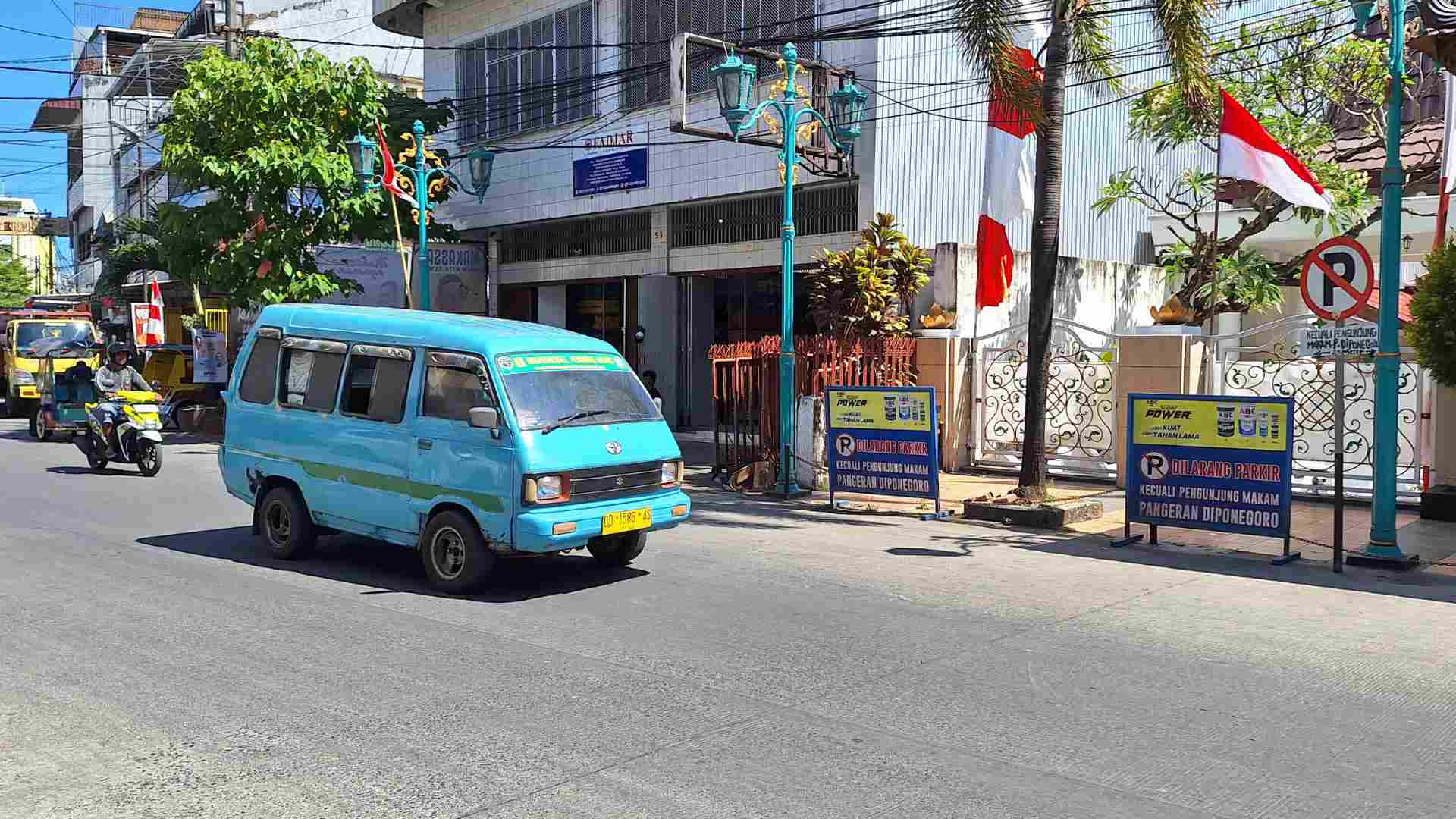
Accommodation
There are a lot of places to stay in Makassar, and they are quite cheap. Even the luxurious hotels offer fairly low prices. You can easily find hotels in Booking and Agoda– just look for a convenient location, rates, and reviews, as well as other facilities that you prefer.
Check for hotels in South Sulawesi on Booking!
Check for hotels in South Sulawesi on Agoda!
We tried three hotels- Whiz Prime Hotel Sudirman Makassar, Whiz Prime Hotel Hasanuddin Makassar, and ibis Makassar City Center- the last one was the most luxurious of them. Although only 3-star, it had 4-star hotel features. And we stayed for only 22 USD per night per room!
Of course, there are many other options you can try, and all of them are still cheap. So, better avoid the cheapest places (usually in low quality)- their prices can be even lower than 10 USD but if the good options are cheap, why don’t you relax better in a better place?
Mobile SIM card
Of course, this is not just for Makassar but for your whole trip to Indonesia. The best mobile operator is Telkomsel. As mentioned above, don’t buy a SIM card from local shops. Although it is cheaper and faster to install, it usually doesn’t work! Instead, plan some time to go to the main office of Telkomsel. When you go there, you will probably wait for at least 30 min or even more than an hour but they will give you a good, reliable, and working SIM card that you can use everywhere in Indonesia.
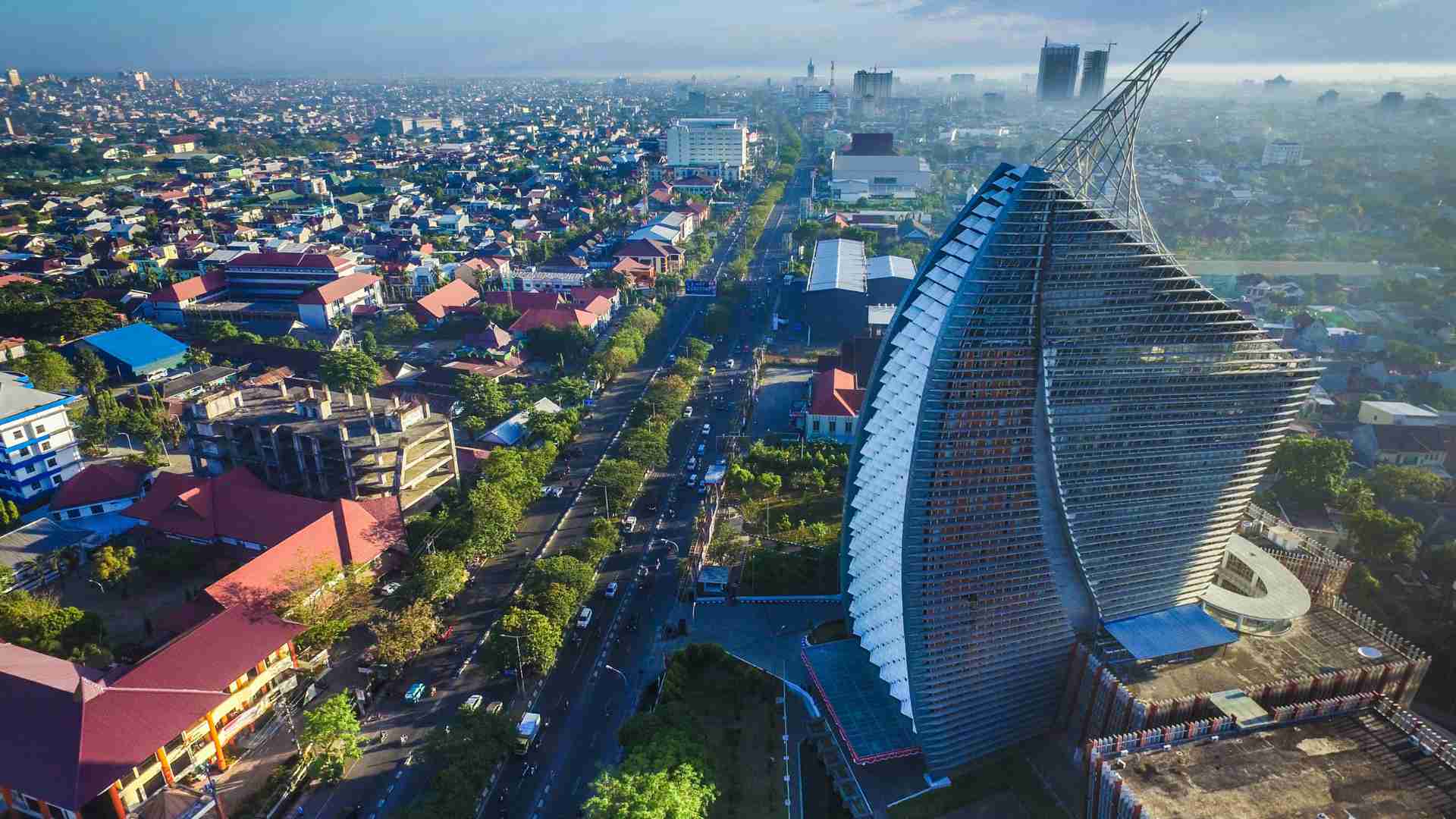
Safety
Makassar is a safe city, like most cities in Indonesia and Southeast Asia. Of course, you still have to be aware of some normal small crimes like pickpocketing in crowded areas, and scams. But apart from this, in general, there is nothing to worry about.
You can see some protests in the streets of Makassar. They occur regularly (I saw one while I was traveling by Grab motorcycle to the Balla Lompoa Museum). Although they are peaceful, better to stay away from them because sometimes they can turn violent, and in such cases, you better stay away from the epicenter.
So, we stayed two days in Makassar, and then we rented a car to travel to the north- to the fantastic Rammang Rammang Karst area and further away to Tana Toraja, one of the most unique cultures in the world. And when we returned, we celebrated the end of our trip in Trans Studio Mall before we left Indonesia.
This is Makassar and this is in general what you can expect there. So, if you plan a trip to this part of the world, explore Makassar and make it your “base camp” for South Sulawesi adventures!
Take a look at this video about Makassar below:
Like it? Pin it here⇓! Follow us in Facebook, X and Instagram!
